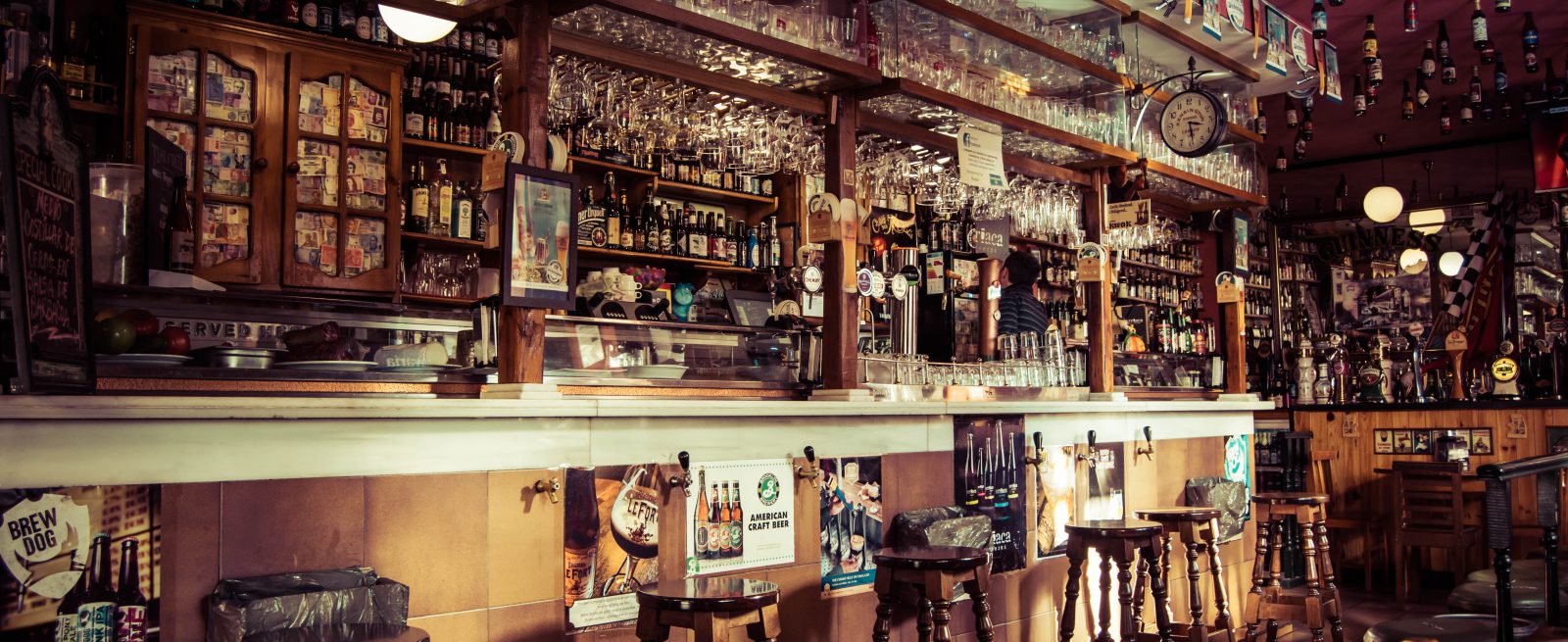Five Ways You’re Running Your Bar Into the Ground
6 Min Read By Danny Barry
You thought adding a bar to your business was going to be fun.
Maybe even easy.
A bar is a great spot for customers to enjoy a new cocktail, wait for a table, watch the game, and even meet new people.
And hey, maybe your bar is doing very well. But is it running as efficiently as it could?
You realized pretty quickly that running a bar is definitely not easy – and it’s a totally different beast than running a restaurant.
When you’re running a bar, there are a lot of new things to focus on. And that means even more room for slip-ups and bad habits.
If you aren’t careful, the bar can drain your cash faster than your regulars can drain their glasses.
Get a handle on your bar business with the Five Ways You’re Running Your Bar Into the Ground, or it will be last call…permanently.
Weak Links in Your Staff
You’ve got too much going on to check every detail, but you’ve noticed that your bottles are running dry faster than usual, and your sales don’t show why.
The problem could be your staff.
But how can you spot a weak link in your team?
First, check your training program. Are you helping your new hires with ample training to avoid unnecessary slip-ups? Haphazard pours can lead to spillage, overuse, and wasted inventory.
Or maybe a veteran bartender is making some heavy-handed pours, blowing through your booze and drying up your profits.
It may seem like a few ounces here and there is no big deal. But those slip-ups can add up big time.
For vets, it’s a bit less about training and bit more about sticking to the proper drink proportions.
Another question: Are your bartenders giving away too many free drinks?
A drink or two on the house isn’t a bad thing. But on a regular basis? You’ve got a problem.
Your POS numbers will be totally out of whack, so you’re ordering more bottles without the dollars to back it up.
On top of all this? There’s a chance your staff might simply be stealing from you.
SOLUTION: Maintain a constant, ongoing training program.
- Don’t just send a bartender into the jungle without at least 1-2 days of training. Build a program that teaches proper techniques and tricks.
- Train on pours and randomly test bartenders to keep good habits in check. Keep it fun, though, and offer some rewards to sweeten the deal. This will keep your staff involved, smiling, and pouring correctly.
- Keep your company policies updated, and stress the importance of accurate numbers and consistent pours.
- Make your staff feel like a part of the business. Engaged employees are way more likely to stay honest.
Your Marketing…May Not Be As Effective As You Thought
So, you’ve got a happy hour. Great! So does every other bar in town.
Sure, it’ll work sometimes.Enough to keep the business flowing.
But, happy hours don’t showcase what makes your bar special or unique. It’s just a discount, which means less cash per customer.
You’ve probably also got a website and some social media pages.
When’s the last time you updated them? Have you ever done any advertising?
If the answer is no, you’ve got some changes to make.
SOLUTION: Get creative.
- Try putting a triangle board outside with witty sayings that make you stand out. People will remember it and start to look forward to reading them.
- Create special menus and host special events. Try establishing partnerships with local companies and sports leagues.
- It’s the 21st century. Update your website and your social media pages. Post your specials, take photos, share your events, and create a hashtag for your brand.
You’re Disorganized
Bars love to show off their wide array of bottles behind the bar – most have almost 120 different liquors. Sure, it looks cool to color-coordinate, but is there a method behind the madness?
If your bottles aren’t organized well, it makes life brutal when it’s time to do a count.
Plus, when the bar is busy, your bartenders might have a hard time finding what they need quickly.
When time means money, why are you keeping customers waiting?
SOLUTION: Organize your liquors by volume.
- Keep your 10-12 “highest volume” liquors in one easy-to-access place. They’re going to account for 60-80% of your spend, so it’s good to know where they are. Plus, if you want to know your usage, you’ll have to count ‘em every week.
- Keep your 60+ “mid-volume” bottles in another spot. These you order about every other week, and they should be pretty easy to spot.
- Find a home for your 40 or so “low volume” drinks. They’re more expensive, and you’re only ordering them about twice a year… And not serving them often, either
Price-blindness on Booze
Are you tracking the costs of allyour booze?
Blindly buying liquor, beer, and wine can be a costly bad habit.
It’s a pain to keep track of all the numbers, but, keeping tabs on your costs can make a world of difference.
Unfortunately, suppliers sometimes take advantage of the fact that you’re ignoring your pricing.
And when you ignore the costs on a regular basis, how will you know if you’re being taken for a ride?
Look our for price creep.
You negotiated with a vendor to get a better cost. Before long, that cost starts to rise back up to where it was…maybe even higher.
The rise is slow enough that vendors are banking on you not noticing it at all.
There are also price spikes.
Out of nowhere, you’re paying 15% more than you were a month ago. And your supplier didn’t call you up to tell you about that increase…
When you aren’t keeping tabs of your spend, you run the risk of getting stiffed.
SOLUTION: Follow price trends, keep track of your costs, or just get technology that does it for you.
You’re working crazy hours and your to-do list is endless.
Between training bartenders, ordering new barstools, and making purchases, you don’t have a lot of room to monitor your costs, even though it’s extremely important.
You can’t do it all…and you don’t have to.
That’s where technology comes in. Find a solution that does the work for you so you can call the shots, not your suppliers.
Not Paying Attention to Your Variance
Variance is the difference between what you actuallyhave in stock and what you thoughtyou had.
It’s related to your portions and your loss. Just like in your restaurant, you need to know what ingredients to check so you can figure out individual problems.
Managing variance is crucial to profitability.
Focus on alcohol usage to size up your variance, especially for your key, high-volume ingredients. That’s right, you don’t have to measure EVERYTHING every time.
Also, keep in mind that liquor and beer are totally different.
For liquor, pay close attention to the portioning, or how much your bartenders are pouring. This is where you can find those heavy-handed bartenders we talked about.
For beer, it’s all about the loss. Sloppy pours can lead to too many spills. Or maybe your problem is too many free pints. If you’re going through more kegs without the sales to support it, you’ll have to do some investigating.
SOLUTION: Pay attention to those high-usage items.
Worrying about counting a liquor you only order twice a year is a waste of your time. It just doesn’t make sense.
Instead, target your popular drinks – your well vodkas, basic bourbons, and light beers. That’s where the big impact to your revenues can lie.
It’s called Pareto’s Law, or the 80/20 rule. You consistently count 20% of your inventory (those items), because they account for 80% of your costs.
Pareto’s Law helps you focus on a smaller amount of booze that takes up more of your spending costs.
But don’t forget you’re still managing an entire bar. You can’t completely ignore those expensive liquors… Give them a count every now and then.
Another tip? Keep them locked up to protect your high-spend spirits from theft, breakage, or spillage.
Conclusion: Save your Money and Save Your Bar
Like we said…managing a bar isn’t all fun. It’s a tough business.
The good news is, there are some simple solutions to all the ways a bar can fail. And technology can help with almost all of them.
Software and apps can’t write your next marketing slogan…or train your bartenders on mixology. But they canprovide the tools to make your bar pay off.
Every restaurant bar is different. So do your research and find a solution that works for you.
But you shouldn’t just continue to ignore your bar costs. You simply can’t afford to.


